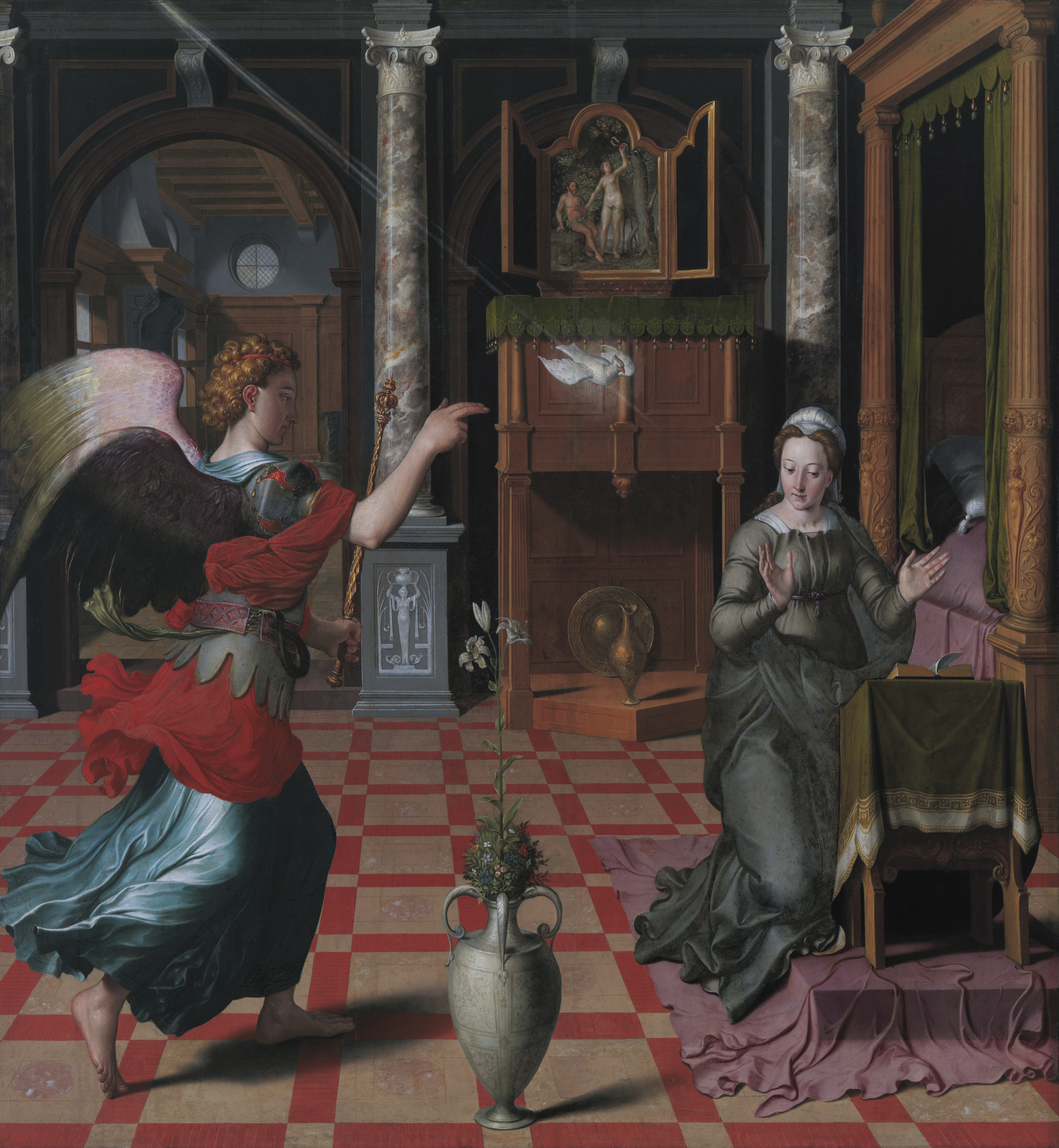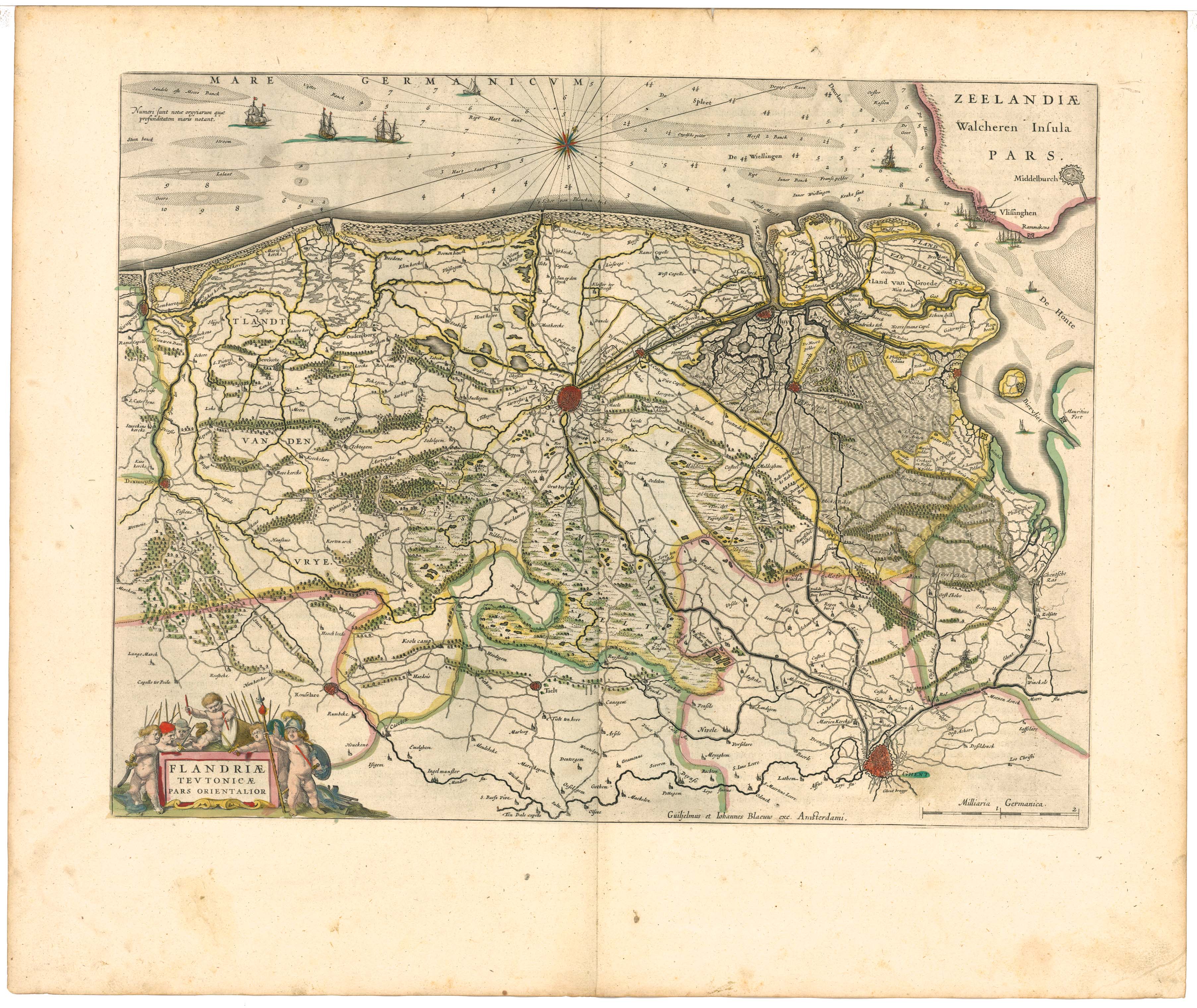|
Christian Van Der Goes
Christiaan or Christian van der Goes (1530s, Delft – 22 September 1600), a Dutch nobleman, was schout of Delft from 1562 to 1577. Christian was the son of Adriaan van der Goes, Land's Advocate of Holland (died 5 November 1560), and Anna van Spangen (died 14 April 1548). In 1558 he married Anna van Renoy, and the couple were to have seven children: #Adriaan, councillor to the Prince of Orange #Maria #Anna #Gerard Renoy, who died 8 August 1623 after serving many years in the Army of Flanders #Laurens, who died at Vlissingen of wounds suffered in the Siege of Ostend #Aernout, a canon and member of St. Michael's Abbey, Antwerp #Kornelis He was appointed ''schout'' (representative of royal authority) for Delft in 1562, and initially kept his position on the city executive at the change of government in Delft in 1572 (see Dutch Revolt The Eighty Years' War or Dutch Revolt ( nl, Nederlandse Opstand) (Historiography of the Eighty Years' War#Name and periodisation, c.1566/ ... [...More Info...] [...Related Items...] OR: [Wikipedia] [Google] [Baidu] |
Pieter Pourbus
Pieter Jansz. Pourbus (c. 1523–1584) was a Flemish Renaissance painter, draftsman, engineer and cartographer who was active in Bruges during the 16th century. He is known primarily for his religious and portrait paintings.Pieter Pourbus at the Life Birth and origin Pieter Pourbus was born in Gouda in 1523 or 1524. He moved to Bruges at the age of 20. Very little is known of his childhood and youth while living in Gouda; contemporary artists such as |
Schout
In Dutch-speaking areas, a ''schout'' was a local official appointed to carry out administrative, law enforcement and prosecutorial tasks. The office was abolished with the introduction of administrative reforms during the Napoleonic period. Functions The exact nature of the office varied from place to place and changed over the course of time. In general, a ''schout'' was appointed by the lord (''heer'') of a domain ('' heerlijkheid'') and acted in the lord's name in the local day-to-day administration of the domain, especially the administration of justice. A ''schout'' had three main functions: administration, law enforcement and criminal prosecution. First, the ''schout'' was responsible for many local administrative matters in the town or heerlijkheid. The ''schout'' presided in the meetings of the ''schepenen''. Together, the ''schout'' and ''schepenen'' made up what we would call the "town council" today. He ensured decrees were published. He sometimes represented the to ... [...More Info...] [...Related Items...] OR: [Wikipedia] [Google] [Baidu] |
Delft
Delft () is a List of cities in the Netherlands by province, city and Municipalities of the Netherlands, municipality in the Provinces of the Netherlands, province of South Holland, Netherlands. It is located between Rotterdam, to the southeast, and The Hague, to the northwest. Together with them, it is part of both the Rotterdam–The Hague metropolitan area and the Randstad. Delft is a popular tourist destination in the Netherlands, famous for its historical connections with the reigning House of Orange-Nassau, for its Delftware, blue pottery, for being home to the painter Johannes Vermeer, Jan Vermeer, and for hosting Delft University of Technology (TU Delft). Historically, Delft played a highly influential role in the Dutch Golden Age. In terms of science and technology, thanks to the pioneering contributions of Antonie van Leeuwenhoek and Martinus Beijerinck, Delft can be considered to be the birthplace of microbiology. History Early history The city of Delft came into ... [...More Info...] [...Related Items...] OR: [Wikipedia] [Google] [Baidu] |
Schout
In Dutch-speaking areas, a ''schout'' was a local official appointed to carry out administrative, law enforcement and prosecutorial tasks. The office was abolished with the introduction of administrative reforms during the Napoleonic period. Functions The exact nature of the office varied from place to place and changed over the course of time. In general, a ''schout'' was appointed by the lord (''heer'') of a domain ('' heerlijkheid'') and acted in the lord's name in the local day-to-day administration of the domain, especially the administration of justice. A ''schout'' had three main functions: administration, law enforcement and criminal prosecution. First, the ''schout'' was responsible for many local administrative matters in the town or heerlijkheid. The ''schout'' presided in the meetings of the ''schepenen''. Together, the ''schout'' and ''schepenen'' made up what we would call the "town council" today. He ensured decrees were published. He sometimes represented the to ... [...More Info...] [...Related Items...] OR: [Wikipedia] [Google] [Baidu] |
Land's Advocate Of Holland
The Lands’ Advocate ( nl, landsadvocaat) of Holland acted as the Chairperson, Chairman of the States of Holland. The office started in the early 14th century and ended in 1619, when the title was renamed into Grand Pensionary. He was the speaker of the nobility of Holland and had the first say on a subject during a meeting of the Estates. A decision of the Estates was made by a summarizing of all the statements of the other delegates by the Lands’ Advocate. The Lands’ Advocate of Holland was the most powerful man of the Dutch Republic, United Provinces when there was no Stadtholder in Holland (because two-thirds of the tax income of the republic came from the county of Holland). The most powerful lands’ advocates of Holland were the last two, Paulus Buys (1572–1584) and Johan van Oldenbarnevelt (1586–1619). County of Holland 1619 disestablishments Heads of government of non-sovereign entities Government ministers of the Netherlands 1610s disestablishments in the Du ... [...More Info...] [...Related Items...] OR: [Wikipedia] [Google] [Baidu] |
Army Of Flanders
The Army of Flanders ( es, Ejército de Flandes nl, Leger van Vlaanderen) was a multinational army in the service of the kings of Spain that was based in the Spanish Netherlands during the 16th to 18th centuries. It was notable for being the longest-serving army of the period, being in continuous service from 1567 until its disestablishment in 1706 and taking part in numerous pivotal battles of the Dutch Revolt (1567–1609) and the Thirty Years' War (1618–1648). Because it employed or pioneered many developing military concepts more reminiscent of later military units, enjoying permanent, standing regiments (''tercios''), barracks, military hospitals and rest homes long before they were adopted in most of Europe, the Army of Flanders has been considered the world's de facto first modern professional standing army. Sustained at huge cost and at significant distances from Spain via the Spanish Road, the Army of Flanders also became infamous for successive mutinies and its ill-dis ... [...More Info...] [...Related Items...] OR: [Wikipedia] [Google] [Baidu] |
Vlissingen
Vlissingen (; zea, label=Zeelandic, Vlissienge), historically known in English as Flushing, is a Municipalities of the Netherlands, municipality and a city in the southwestern Netherlands on the former island of Walcheren. With its strategic location between the Scheldt river and the North Sea, Vlissingen has been an important harbour for centuries. It was granted City rights in the Netherlands, city rights in 1315. In the 17th century Vlissingen was a main harbour for ships of the Dutch East India Company (VOC). It is also known as the birthplace of Admiral Michiel de Ruyter. Vlissingen is mainly noted for the yards on the Scheldt where most of the ships of the Royal Netherlands Navy (''Koninklijke Marine'') are built. Geography The municipality of Vlissingen consists of the following places: * City: Vlissingen * Villages: Oost-Souburg, Ritthem, and West-Souburg * Hamlet: Groot-Abeele History The fishermen's hamlet that came into existence at the estuary of the Schelde a ... [...More Info...] [...Related Items...] OR: [Wikipedia] [Google] [Baidu] |
Siege Of Ostend
The siege of Ostend was a three-year siege of the city of Ostend during the Eighty Years' War and the Anglo–Spanish War. A Spanish force under Archduke Albrecht besieged the fortress being held initially by a Dutch force which was reinforced by English troops under Francis Vere, who became the town's governor. It was said "the Spanish assailed the unassailable; the Dutch defended the indefensible."Belleroche p 14 The commitment of both sides in the dispute over the only Dutch-ruled area in the province of Flanders, made the campaign continue for more than any other during the war. This resulted in one of the longest and bloodiest sieges in world history: more than 100,000 people were killed, wounded, or succumbed to disease during the siege. Ostend was resupplied via the sea and as a result held out for three years.van Nimwegen pp 171–73 A garrison did a tour of duty before being replaced by fresh troops, normally 3,000 at a time keeping casualties and disease to a minim ... [...More Info...] [...Related Items...] OR: [Wikipedia] [Google] [Baidu] |
Dutch Revolt
The Eighty Years' War or Dutch Revolt ( nl, Nederlandse Opstand) (Historiography of the Eighty Years' War#Name and periodisation, c.1566/1568–1648) was an armed conflict in the Habsburg Netherlands between disparate groups of rebels and the Spanish Empire, Spanish government. The Origins of the Eighty Years' War, causes of the war included the Reformation, centralisation, taxation, and the rights and privileges of the nobility and cities. After Eighty Years' War, 1566–1572, the initial stages, Philip II of Spain, the sovereign of the Netherlands, deployed Army of Flanders, his armies and Eighty Years' War, 1572–1576, regained control over most of the rebel-held territories. However, Spanish Fury, widespread mutinies in the Spanish army caused a general uprising. Under the leadership of the exiled William the Silent, the Catholic- and Protestant-dominated provinces sought to establish religious peace while jointly opposing the king's regime with the Pacification of Ghent ... [...More Info...] [...Related Items...] OR: [Wikipedia] [Google] [Baidu] |
Cornelis Musius
Cornelis Musius (1500–1572) was a Dutch Catholic priest and Neo-Latin poet. He was the last rector of the Sint Agathaklooster in Delft, until hanged without due process on 10 or 11 December 1572. Although never officially canonised, he has long been regarded as a martyr by Dutch Catholics. Life Musius is thought to have been born in Delft on 11 June 1500 (although the sources are not unanimous, some giving alternative dates or locations). He was the son of Johannes Pietersz Muys, a descendant of the Dordrecht patrician lineage of Muys van Holy, and Elisabeth Woudana. He was orphaned young and began a clerical career. He studied theology at Leuven University, and travelled in Flanders and France, spending time in Ghent, Arras, Paris and Poitiers. He then became rector of the Sint Agathaklooster in Delft, a post he held for 35 years, while writing Latin verse and corresponding with numerous scholars he had met on his travels. He commissioned paintings for the convent from Maarte ... [...More Info...] [...Related Items...] OR: [Wikipedia] [Google] [Baidu] |
1530s Births
Year 153 ( CLIII) was a common year starting on Sunday (link will display the full calendar) of the Julian calendar. At the time, it was known as the Year of the Consulship of Rusticus and Rufinus (or, less frequently, year 906 ''Ab urbe condita''). The denomination 153 for this year has been used since the early medieval period, when the Anno Domini calendar era became the prevalent method in Europe for naming years. Events By place Roman Empire * Minor uprisings occur in Roman Egypt against Roman rule. Asia * Change of era name from ''Yuanjia'' (3rd year) to ''Yongxing'' of the Chinese Han Dynasty. Births * Didia Clara, daughter of Didius Julianus * Kong Rong, Chinese official and warlord (d. 208) * Zhang Hong, Chinese official and politician (d. 212) Deaths *Tiberius Julius Rhoemetalces Rhoemetalces, also known as Rhoimetalces ( el, Τιβέριος Ἰούλιος Ροιμητάλκης, fl. 2nd century AD; died 153), was a Roman client king of ... [...More Info...] [...Related Items...] OR: [Wikipedia] [Google] [Baidu] |



.jpg)